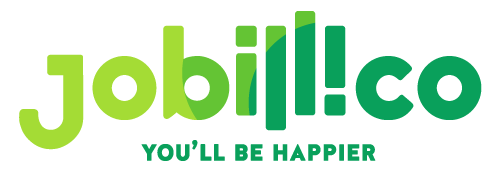8 Job Hunting Tips To Help You Rise Above Bulk Applications in the AI Era
 Publié le 17 October 2025
Publié le 17 October 2025
Every job posting now attracts around 250 applicants, and only four to six are usually invited to interview. Automated screening systems, primarily applicant tracking systems (ATS), eliminate about 75% of resumes before a human ever sees them.
Hiring systems look for specific keywords, formats, and patterns. That means qualified applicants lose opportunities because their resumes don’t mirror the patterns these systems look for. So, you can meet every qualification and still go nowhere if your resume fails those checks.
The good news is that once you understand how these systems work, you can optimize your resume to get past them.
This guide will show you proven job hunting tips that can help you beat the bots and get your resume in front of actual hiring managers.
1. Customize Every Resume and Cover Letter
ATS systems compare your resume directly against the job posting, looking for specific matches. Create a master resume with all your experiences, then customize each job application by pulling relevant details that mirror the job description.
Analyze the job posting for required skills, preferred qualifications, and repeated phrases. Then, adjust your resume’s skill section, job descriptions, and summary to include those exact terms.
For cover letters, reference specific company initiatives or recent news to show you’ve done your homework. These strategies can increase your chances of passing initial automated screening.
2. Use Strategic Keywords
Keywords are the secret language of ATS systems. They’re specific terms, skills, and qualifications the system searches for to determine if you’re a match.
Mine the job posting for both obvious and subtle resume keywords. Look for technical skills, software names, industry terms, and even specific phrases (e.g., “cross-functional collaboration”, “data-driven decisions”).
Include these naturally throughout your resume, especially in your skills section and job descriptions. Avoid keyword stuffing. Use them contextually within actual accomplishments and responsibilities.
To increase your chances, create different versions of common skills. For example, if the posting mentions “project management,” also include “project coordination” and “program management” if they apply to your experience.
3. Build a Strong LinkedIn Resume
Your LinkedIn profile always serves as your always-available resume, which recruiters actively search. Job hunting tip 101: Optimize it like you would any resume, but take advantage of LinkedIn’s unique features.
Use your headline strategically. It’s searchable text that appears in the results. Instead of just “Marketing Manager,” try “Digital Marketing Manager | SaaS Growth Specialist | Performance Marketing Expert.”
Fill out every section completely, as LinkedIn’s algorithm favors complete profiles in search results.
Consider posting regularly about industry topics, sharing relevant articles, and engaging with others’ content. This activity signals to LinkedIn that you’re an engaged professional, which boosts your visibility in recruiter searches.
Turn on “Open to Work” settings, but use the private option to signal availability only to recruiters.
4. Leverage Networking to Bypass the Bots
The most effective job hunting tip for beating ATS systems is to avoid them completely. When someone refers you internally, your resume often goes directly to hiring managers, skipping the automated screening process altogether.
Build genuine relationships before you need them. Attend industry events, join professional associations, and participate in online communities related to your field. When you do need to job search, reach out to connections at target companies. You never know—a simple message asking for insights about the company culture or role can lead to internal referrals. Mention how using a coworking space app can help professionals find networking opportunities and build valuable industry connections.
And don’t just ask for jobs. Ask for advice, informational interviews, or industry insights. People are more willing to help when you’re seeking knowledge rather than immediately asking for favors. These conversations often naturally lead to job opportunities or referrals.
5. Submit Your Resume Through Multiple Channels
Don’t rely solely on job applications. The more your resume reaches the company, the better your chances of being seen by actual humans.
Apply through the company website first, then look for additional paths. Find employees on LinkedIn and send thoughtful connection requests. Email hiring managers directly when you can identify them. Attend job fairs or company events where you can submit resumes in person.
Use recruiting agencies and staffing firms in your industry. They often have direct relationships with hiring managers and can advocate for you. Consider reaching out to alumni from your school who work at target companies. Each additional channel increases your odds of bypassing the initial ATS filtering.
6. Showcase Value with Quantifiable Achievements
Numbers speak louder than descriptions in both ATS systems and to human readers. Quantifiable achievements prove your impact and make your accomplishments more memorable and credible.
Transform vague responsibilities into specific accomplishments. Instead of “managed social media accounts,” write “grew Instagram following by 150% and increased engagement rates by 45% over six months.” Replace “improved customer satisfaction” with “raised customer satisfaction scores from 3/2 to 4.6 out of 5 through process improvements.”
Use percentages, dollar amounts, timeframes, and scale whenever possible. If you don’t have exact numbers, make reasonable estimates based on your knowledge. Hiring managers understand that some metrics aren’t perfectly trackable, but the effort to quantify shows results-oriented thinking.
7. Stay Current and Upskill Continuously
For tech roles, job seekers can stand out by building skills in areas like OSS code security tools, risk analysis, and compliance auditing. Knowing how to evaluate systems and identify vulnerabilities shows employers you’re ready to handle challenges.
But continuous learning extends far beyond technical skills. Stay informed about industry trends, emerging technologies, and changing regulations that affect your field.
Subscribe to industry publications, follow thought leaders on LinkedIn, and participate in professional forums where members discuss current challenges.
Document your learning through certifications, online courses, or personal projects. Create a portfolio that demonstrates your growing expertise, whether it’s a GitHub repository showcasing coding projects, case studies from freelance work, or analysis of industry trends you’ve written.
8. Add a Personal Touch
In a hiring landscape dominated by automated screening and AI-filtered resumes, one timeless gesture can still cut through the noise: sending a personalized thank-you card. While most applicants rely on templated follow-ups—or skip them altogether—handwritten or well-crafted digital thank-you notes show intentionality, emotional intelligence, and genuine interest.
Mentioning specific points from the interview or referencing the company’s values creates a human connection that algorithms can’t replicate. In an era of bulk job applications, this small act can leave a lasting impression—and tip the scales in your favor.
Beyond thank-you notes, find other ways to inject personality into your application process. Include a brief personal interests section on your resume that reveals something unique about you. In fact, according to ResumeGenius, 72% of hiring managers consider a personalized cover letter to be a very essential part when applying to jobs. This also makes it more likely for them to interview candidates.
Volunteer work, unusual hobbies, or side projects can spark conversations and help interviewers remember you. For example, a line about marathon running, photography, or mentoring students gives interviewers easy conversation starters.
Conclusion
Although the job market has changed, that doesn’t mean you won’t be successful in landing a role.
The candidates who succeed aren’t necessarily the most qualified. They’re the ones who understand how to beat the bots and connect with humans.
Job hunting tips, such as using strategic resume keywords, customizing job applications, and formatting for AT systems, can increase your odds.
Your next opportunity is out there. Now, you have the tools to make sure the right people see you’re ready for it.

Mike Bandar is an award-winning UK-based entrepreneur. A Founding Partner of Turn Partners, the startup studio focused on the acquisition, turnaround or creation of digital businesses. Through Turn Partners, Mike co-founded Hopper HQ the Instagram planning and scheduling tool, working with thousands of influencers, brands and agencies around the world.






